Caribbean Living in San Andres Island, Colombia
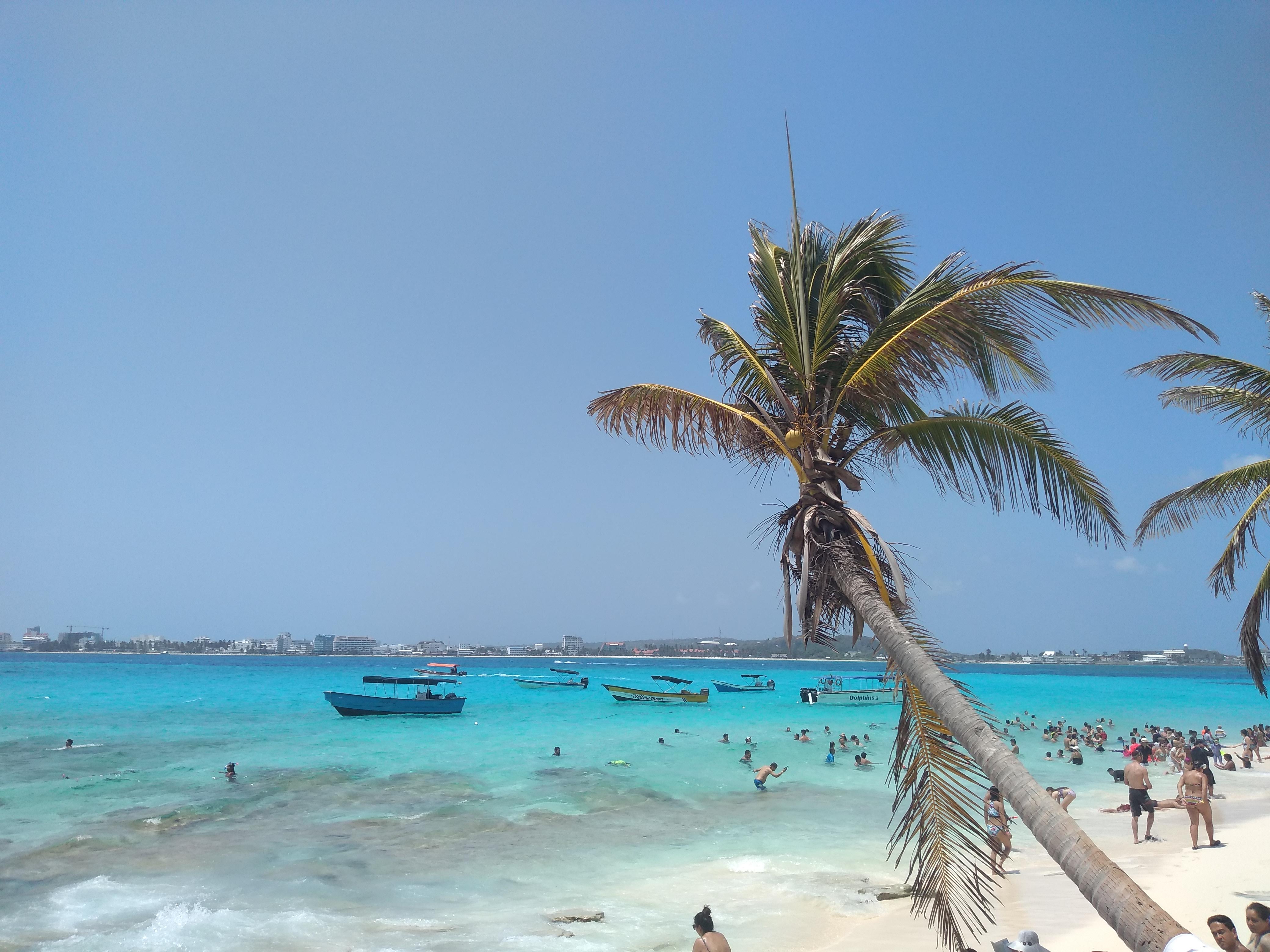
Sitting on a tiny boat, hanging my tanned hand over the edge to submerge in the warm crystalline waters as I headed towards an island 15 minutes of San Andres that was no bigger than a street, I realised my dream was finally being fulfilled.
Since I had begun planning my voyage to Colombia, I had hoped to make it to the northern Caribbean to dive in a place where they say is second only to Cozumel fo the best diving in the Caribbean.
Colombia is not the first place that Australians think of when they want a tropical holiday, nor a cultural experience. The islands of the Philippines or Bali are closer and therefore cheaper, but also there is a sense that Colombia is more dangerous, especially for women travelling alone. However since I began learning Spanish and meeting many Colombians in Australia, I began to grow a passion for their music, their history and their vibrancy for life.
The San Andres Archipelago is located an hour’s flight north of Cartagena off the mainland, to the east of Nicaragua in Central America. The island and its neighbouring island, Providencia, were famously discovered by Captain Morgan, who now marks bottles of rum around the world. San Andres is a tri-lingual island, with the locals speaking English, Spanish and an island version of English – creole, a language invented so that the English who colonised the island did not understand them, however in Providencia, they speak more English than Spanish. Providencia is far less touched by tourists because of its difficulty to get to: a once-a-day (and expensive) flight, or a 5-hour catamaran ride in what I’ve read to be a harrowing journey for those predisposed to motion sickness. It sounded amazing to me, but alas, money and time didn’t allow me, which I later regretted when I heard how empty the beaches are and how much more life is seen in the ocean.
Day 1
After a week visiting my old dive centre in Playa del Carmen and chilling out for a week in Selina Hostel (which is AMAZING), i hopped on a flight from Cancun to Bogota, and then later a domestic flight from the capital to the island of San Andres, located far north of the mainland, to the west of Nicaragua. I was a little worried that immigration would not let me in as I didn’t have a ticket out of the country, but they took one look at my nationality, asked what I did for a living (I said blogger) and let me in without any further enquiry. Phew! To be allowed entry onto the island, you have to buy a tourist pass in the airport before boarding for about $36USD, on which you fill out your details and hand to the staff at the airport when you arrive in San Andres.
TIP: You must have a return ticket or a ticket off the island in order to be allowed to board the flight, and you must write the date you leave on your tourist pass.
As usual, I got talking with a Colombian woman at the boarding gate, and we decided to share a taxi once arriving in San Andres. Taxis from the airport cost $15000 Colombian Pesos ($5USD) and so far I haven’t been ripped off by any taxis here. The taxi driver had his wife in the front with us, and when she heard me chatting about coming to dive, she passed me the number of her brother, who had a dive centre on the island.
I arrived at my hostel called Karibbik Haus, was given a very warm welcome by the señora, Rosie, and a slightly less verbal but cordial nod from the German owner, who sits outside every night watching the mototaxis passing by, chatting to the neighbours. I walked across the road, bought myself a burger from a street vendor who sets up each night on the corner and headed upstairs to the kitchen. Whilst eating I chatted in the living room with a couple of guys from the US who had met only a month earlier in Argentina and decided to travel together. I also talked with a tired-looking British writer who told me how disappointed he was with the diving here, and how he had imagined the colourful corals of the videos he’d seen of Jacques Cousteau when he was a child. He then moved hostels the next night because the endless motorcycles passing by the hostel disturbed him, saying that he was an author and needed quiet. Strange choice to stay in a hostel, I told him. The hostel was very small, with only 4 rooms and 4-6 bunks in each room, each with their own curtain, light, charging port, although I couldn’t charge my phone without the light on, so I spent most of my week with half battery. The rooms were always dark and quiet, with aircon, making it really easy to rest. The kitchen was barely used because cooking was allowed only between 8 am and 8 pm. The living room had an extremely uncomfortable bench that angles so far back you had a sore back after an hour of television. It had a balcony with a single hammock that looked out onto a street that ended at the ocean, and a table to eat breakfast, which was cooked daily for only $4. The ladies were so kind and accommodating, helping us with whatever advice and hooking us up with the most trustworthy people on the island to do tours and activities.
Tip: Prepare to be out of contact for the week and enjoy it! The phone should be used for photographic purposes only – you are on a tropical island near central America – the wifi is NOT going to be good. Whatsapp was usable for text conversations and a few very shaky phone calls, but do not expect to load any web pages. Leave our phone at your hostel and peel yourself away from Facebook. If you are that Millennial that you can’t, look into a portable wifi device and ask about service in San Andres, or I advise you that it’s not the place for you.
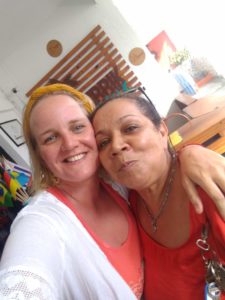
Day 2
I woke up at 8am and wrote to this dive shop contact named Sugar asking for a day to dive, to which he replied that if I wanted to dive today, the chofer was in the neighbourhood and would pick me up. Within 15 minutes, I had clambered in the back of a van and was being driven around to the western side of the island. The hostel and much of the activity happens on the eastern side, but the diving action is on the western side, which due to its lack of beaches and purely rocky shoes, is populated only by locals. It only takes half an hour to drive around the whole island, so it doesn’t matter where you stay.
The van pulled up to San Andres Divers, a shop right on the water, with only a walk across the road or a short truck ride needed to the shore diving sites. I was introduced to Jaime, a local guide and a group of Argentinians with whom I would dive. The guide spoke Spanish for the entire preparation, asking us our sizes, organising the equipment and getting us to sign to standard responsibility waiver forms that are normal for a certified scuba diver. Knowing that island locals do speak English, I imagine if I hadn’t spoken Spanish, I would have survived, but largely ignored save for the most basic of instructions.
The first dive site was called Nirvana. With our tanks and equipment loaded into the back of a ute, were climbed into the cab wearing our swimmers and weight belts, holding our mask and fins. We were dropped off on the side of the road only a kilometre from the dive shop, where we were assisted with putting on our diving equipment. We walked down to the shore across a difficult rocky terrain where the guide, Jaime, helped us to put on our fins. We secured our masks, took a small jump out from the rocky edge and landed in the cool Caribbean water. We descended and swam across a sandy bank for several minutes, arriving at a small sunken boat. Our guide found a lionfish, pulled out his spear and quickly jabbed at the pest. Lionfish are considered a beautiful species in the South-Pacific, Indian Ocean and the Red Sea, but here in the Caribbean, it is an alien species that reproduces quickly and kills everything in sight. After a minute of struggle, Jaime pulled out the fish from under a rock and carried it with him for the rest of the dive. We turned left and arrive at a huge coral wall, with a sandy bottom below us to the right spanning down to 40 metres. We went to a maximum of 25 metres and eventually rose up to 13-14 metres, the majority of life is found where the light can better reach on the reef. Although we didn’t see any large creatures, I was stunned by the amount of fish life amongst the corals. We turned left again to return over the sandy bank and arrived at a rocky point where we surfaced to a ladder where people swim and free dive.
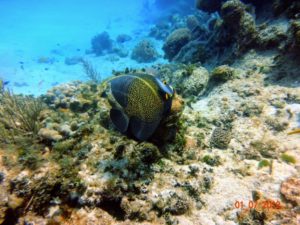
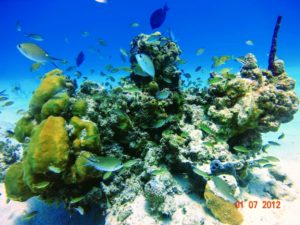
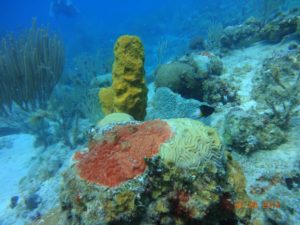
The van was waiting for us with water, juice and biscuit snacks. One thing I was disappointed about with the shop is how much plastic they used. They had a water filter in the shop but provided their clients with water through little bottles, of which I imagine they consume hundreds per week. We headed back to the shop, changing tanks and headed across the road for our second immersion at a site called West View. Immediately upon descending, you see fish flitting in and out of the rocky shore. We ducked under and over the rocks to arrive at a statue of Poseidon, where we saw other aquatic tourists doing Snuba tours – walking on the sandy bottom with a type of air-filled helmet whilst a guide holds food to attract hundreds of fish to take a souvenir photo. We turned around and the guide Jaime took us through a series of mini caverns where we saw huge porcupine fish and lobsters and introduced us to the local nurse shark that rests under an overhang. Jaime was a great guide – he didn’t baby us like new divers – he left us to our own devices, pointed out wildlife and with visibility of 20 metres, didn’t need to stay too close in front of us as we explored.
Upon surfacing from where we entered, we crossed the road to the dive shop, jumped in their warm pool to wash off the salt and get changed for the van to take us back to our accommodation. Jaime then asked us if any of us wanted to return to West View to do a night dive. I wasn’t going to pass up that opportunity, so the van brought me back to rest for a few hours. I went walking to the north part of the island where the beach is. I booked a ticket to a nighttime White Party on a yacht for the following night, but had my card rejected, saying “Tarjeta robada” (stolen card). I had to come back the next day to book as I had to jump on a mototaxi to head back and get ready for my night dive (seriously, a mototaxi is just a local on a taxi who charges you like $1 to take you wherever you want).
A few hours later and I again descended with Jaime and one Argentinian from the group that day. A night dive can be compared to a train station at night – out come all the weirdos – my favourites. In every nook and cranny, we saw lobsters – I counted fifteen. We returned to visit the nurse shark, who was still resting under the overhang but was moving around a lot more in his little cave. We saw one, two, then 3 octopuses, moving over the rocks, spreading their tentacles and changing colour to blend in with the light. I signalled to Jaime with my torch when I saw the third, only to see that it was attached to a fourth – they were fighting. They rose into the water, connected by their tentacles as they spiralled in an aquatic ballet.
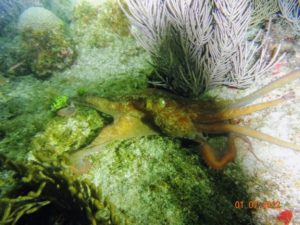
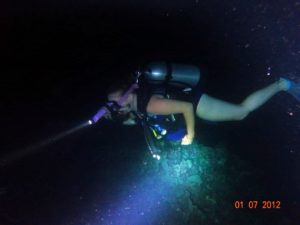
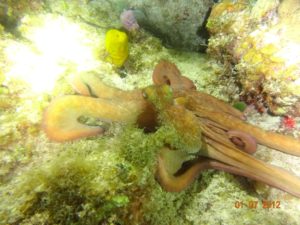
Returning to the hostel, I should have been exhausted after my first day and three dives, but I had to sort out what happened with my card earlier that day. I called my bank, and to verify my identity to talk to me on the phone, they asked for my current address. I had changed my address so my mail would arrive at a friends’ house, so I got the question wrong and lost the ability to speak on the phone to my bank. I still had the travel card that I hadn’t used in a while so all was good. I had been chatting with some guys from the US celebrating one guy’s birthday, so after the frustration of dealing with my bank, I agreed to head out with them to explore the Zona Rosa (The Pink Zone): the bar, restaurant and party area of the town (not to be confused with the red light district,of which there is none in San Andres that I saw). After a 15 minute walk to a bar, we took a shot and headed back to the hostel because some of the guys decided to take some lines of cocaine. They invited me, and considering it was my first time, I figured that it was no better time than with a group of other travellers from my hostel that I trusted would look after me. We then headed back out to the Zona Rosa, we bought a small bottle of Aguardiente, the typical licor of the region, took some small plastic shot cups and sat on some chairs to the side of the shop, drinking and chatting about our travels. After another bottle, we headed to the beach, chatted more and headed back to the hostel. The half line of cocaine I took didn’t have any effect, for those who are asking, so I lay in the hammock enjoying the cool early morning air only to head to my bunk for an hour’s sleep before getting up for my second day of diving.
Day 3
After only 2 hours of sleep, I was dead. There was no way I had the energy or stupidity to put my life in danger doing a dive, so I sat down on the sofa in the dive shop and fell asleep until it was time to do the afternoon dives. Unfortunately, the group going out was going to the same sites, so the guy who I’d originally contacted got suited up and took me for my own private dives in two other sites. We stood on the rocky platform putting on our masks, and suddenly Sugar says “Que tal si nos casamos?” (How about we get married?), then he covers his head with his fins to protect himself from the sun and jumps straight into the water. I follow shortly, and whilst cleaning my mask before descending, he repeats the question “Te vas a casar conmigo?” (Will you marry me?). I simply ignored his question, laughed it off and deflated my BCD to descend.
The dives were relatively similar to those the day before, aside from the guide who kept blowing kisses, ring bubbles and giving me love heart signs underwater, one time giving the action of a wedding ring going onto a finger. Although we did have the pleasure of being visited by a turtle in the last 15 minutes. The surface interval was very short, with no shade to rest under and the hot sun a burn threat for both of us. Without a wetsuit, I was too cold to last more than 35 minutes on the second dive, as was my guide, so we surfaced, headed back to the shop where a met Martin, an Argentinian who had finished a dive and was staying at the same hostel. We met back at the hostel and since I had missed the opportunity to go and book the ticket for White Night on the yacht, we headed out for a walk to find dinner. When you’re on an island, you have to try the seafood, so even though I’m not a fan of the Asian imports we buy on Australian shelves, I tucked into the most delicious dish of seafood rice with a creamy garlic sauce. A little expensive ($24 USD), but well worth it whilst sipping a cocktail listening to live reggae music.
Day 4
Martin and I decided to accompany each other on a tour to the island cays in the bay. For $50000 COP ($16 USD), we had a full day boat tour to 3 islands. We headed to the marina and booked our places where we were all handed wrist bracelets and herded like cattle onto a small boat. Everything we brought with us got wet as we headed over the turquoise water to arrive at Johnny Cay. The island was small enough to walk from one side to the other in a few minutes, however, people flock to the islands because the provide the amazing coloured water and golden beaches that San Andres does not. These beaches seem to be the vacation spot for Colombians and Argentinians – I barely heard a single word of English. Getting onto the boats on these islands was slightly more complicated than at the marina, as the boats were beached on the sand and swayed violently with the waves. We must have waited 30 minutes in the hot Caribbean sun to finally board and head to our next destination – the even smaller island of Acuario. It is literally just a sand bar with some places to buy drinks and a place with fish to snorkel. It is super full of people and as a diver, trying to negotiate my way through a bunch of children and people kicking me to swim was not worth seeing a few fish, but it’s a great family or couple’s activity for non-divers.
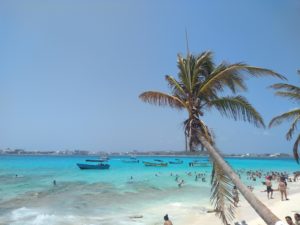
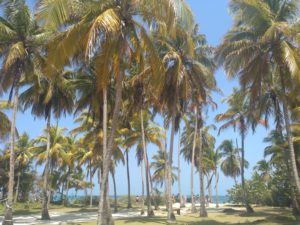
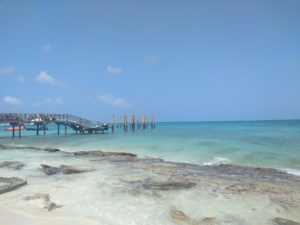
Tip: Take a mask, snorkel, water shoes and a padlock. They sell them all there but save yourself the money.
The third island, Haines Cay, is accessed by wading through the knee-high water from Acquario. The island is small enough to fit 100 or so people but is so much less populated than the waters of Acquario, which reminded me somewhat of the scene in Titanic with the thousands of people in the water struggling to stay afloat and not from hyperthermia. Martin and I sat down in a small reggae cafe and looked out at the turquoise-blue ocean in comfortable silence, before being herded back over to the boat.
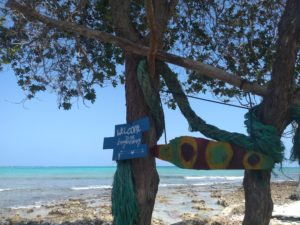
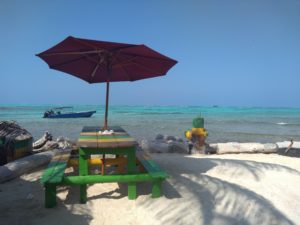
On the way back to San Andres, the boats pass through two spots, one is the Mangroves (Maglares), where they explain their history, however, I would say that they could go into more detail about their importance for the whole marine ecosystem.
A very disappointing way to end the day was passing through a place where small manta rays are found. This place is promoted as a tour, and the guides hop out of the boat, catch a ray and hold it whilst the tourists get out of the boat to touch it, and as it escaped, he would swim to re-catch it. As scuba divers, Martin and I were horrified, and we continued watching in horror as the guide brought it around all sides of the boat for everyone inside to reach down and pat it. He then dived down and retrieved a starfish to do the same. Needless to say, I did not partake.
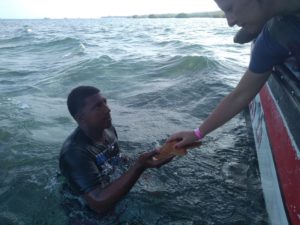
Tip 2, the MOST IMPORTANT I WILL GIVE IN THIS POST: Do not, whatever you do, forget your sunscreen, and apply it not one, not three, but MULTIPLE times a day, after every time you get wet, and any time you have been in the sun for more than 30 minutes. I arrived so burnt that I could not move, sleep, carry my bag or even wear heavy clothes for two days afterwards.
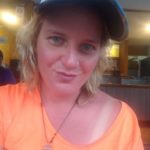
Day 5
I wanted one more day of diving, but this time with an operator who had a boat, so at the suggestion of Rosie in my hostel, I took a mototaxi early the next morning to Karibik Diver. Luckily, there was one spot left on the boat for that morning, and Christian, the friendly German owner happily and professionally signed me in and fetched me my rental gear, of which included a 5mm wetsuit for the colder (26-degree) water away from the shore. I would be diving with a group consisting of a Brazilian man and several Germans, two of whom smoked incessantly not only in the dive shop but on the boat. The shop was directly across the road from the marina where I had left on the tour the day before, so it was a short easy walk with our fins, mask and computer onto the boat. I had very slowly put my wetsuit on my bottom half in the dive shop, taking care of the sunburn on my legs, but nothing prepared me for the pain as a fellow diver rapidly pulled the zip up my red-raw back. I hate being cold on a dive, but having a larger wetsuit with a chance of cold should have been the decision I made that day. Only the cool water eased my burning skin. The first dive was a wall-like structure called Diamond Cantil, which was similar to Nirvana, and apart from fish, we saw no large life at all. One diver ran low on air, so the Divemaster Mario signalled to us that he was going up with him and that we could buddy up and finish the dive together in the same zone. The other divers’ air consumption was as good as mine, and I was one of the last the surface from under the boat at the ladder, with a 69 minute dive time (I was extremely cold after so long of barely moving). After a very painful hour-long surface interval, we got back in and dived the DIamond Wreck, a 60m ship that had all but been completely destroyed with time, and had a lot of life. I was one of the first to go up with the Divemaster this time, I was cold. bored, sore and ready to go home.
Bank Troubles when Travelling
Back at the shop, I unpleasantly discovered that even though my card had been accepted the day before, today it had insufficient funds. So I whipped out my travel card, and the terminal bit me with a “Card rejected” message. I waited 2 hours in the shop to try transferring money to my card but the internet wouldn’t load a single page, so it resulted in a conversation over WhatsApp with my man in Mexico to login to my bank and transfer my money, however even before the transfer, I had money. I started thinking about how to get a flight back home, how much it would cost, how to get money through a Western Union transfer and even arriving in Cartagena the next night and not being able to pay my hostel, ending up on the streets. It was a travel nightmare.
After half an hour on the phone to my bank to find out why my travel card was blocked, the very kind dive shop owner offered for me to pay him through PayPal, and even send him some extra money for him to give to me as cash to last until I could get my cards unblocked in Cartagena. Such kindness from a perfect stranger who had kept his shop open for me to wait for a return call from my bank. I then finally got through to my bank, who reset the pin tries and as I walked out of the dive shop, I decided to try one more time. It worked. Crisis averted.
Tip: Take cash to San Andres: you can never tell if the terminals are going to work. My Argentinian friend Martin also had issues to pull out money from an ATM. Don’t risk getting into the same situation as me. The island is safe, if you guard your bag well, you won’t lose your money.
I had sat in the dive shop from the end of my dive at midday until 5.30pm, so I trudged painfully home, ate a quick dinner and fell asleep fully clothed with the lights on.
Day 6
My two room buddies: Severin from Switzerland and Belen from Chile, were super friendly and fun so we decided to take a bus tour of the island for my final day before boarding a flight to Cartagena late in the afternoon. After turning up without a booking, we had to wait for a cancellation but were in luck and boarded the open tour bus for a round trip of 3.5 hours for only $40000 COP ($13 USD). The good company, the fun reggaeton music and knowing it was my final day, well covered in shade, hate, sunnies, sunscreen and my white night sleeves (all the Slip, Slop, Slap steps that we learn in school), I had a lot of fun. We visited the coconut and pirate museum, where we learnt the history of Captain Morgan. We were charged $170000 for entry ($6), but Belen and I were pulled out to dance but a local and I dived into a cave of water to cool down, so I think we got the most of our entry fee. We then stopped at West View, the spot I had dived in day 2, but this time we had stopped as swimmers, and for only $5000 COP, we experienced to the incredible feeling of jumping off the Trampoline, a diving board some 5 metres above the aqua-blue water, and also a water slide. I think that even though I came to dive, this moment with my new friends, free falling and landing into cool water (without breaking any ribs), was one of my most enjoyable moments of the trip. Our final stop was at a blowhole, where Severin and I went halves ($2.30 each) in a Coco Loco, which was essentially a coconut filled with rum. We sipped it slowly on the way back to the starting point, quite happy as we ambled back to the hostel, stopping for a bite to eat on the way home and reflecting silently on a great day.
Summary
San Andres is a paradise holiday destination for divers who also want the experience the relaxed, Caribbean island way of life. I was satisfied with my experience and ready to leave after 6 days, but there are people that stay up to 10.
Budget (in USD):
- Flight from Cancun-Bogota, then Bogota – San Andres: $210
- Hostel accommodation 5 x nights: $113
- Tourist card and taxis: $52
- Scuba diving: 5 shore, 1 night and two boat: $230
- Food and drinks (inc alcohol): $76
- 2 x day tours: $38
Total: $719
Note: this does not include the 5% bank commissions for using an overseas bank account, or any money you lose on currency conversion.
Final advice:
- Bring cash
- Prepare yourself to not have internet
- Lather on the sunscreen and find shade
- Find time to go to the less-populated island of Providencia
- Watch the sunset on the south-western side of the island
Next stop – Cartagena!
Support my blog: subscribe via email
It takes a long time to plan, write and design my blogs. I love writing, and this is something I do totally for free for the love of sharing with people about my life and adventures, for those who don’t have the opportunity to do it for themselves.
So if you enjoy my writing, I ask you to please subscribe to my blog using the form on the side of this article. Also, leave a comment below with your thoughts on the article, or what you would like me to write about.

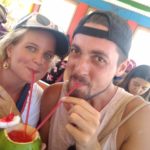
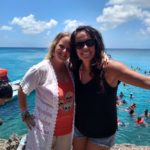
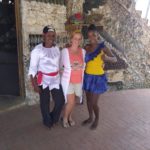
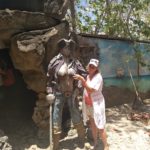
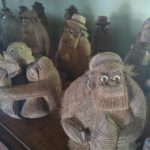
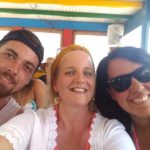
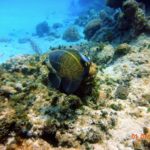
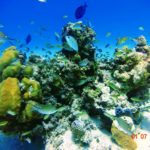
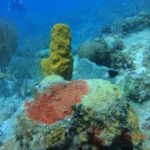
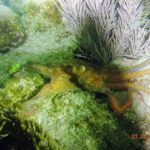
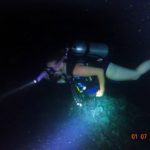
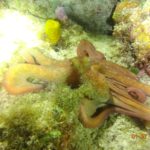
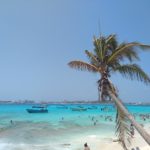
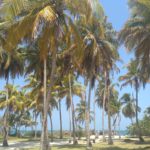
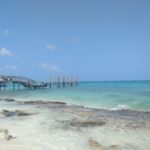
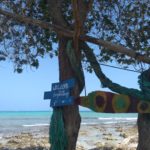
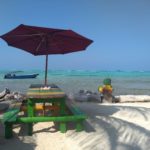
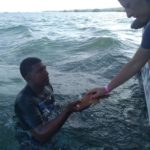
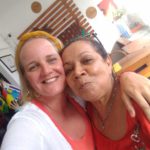
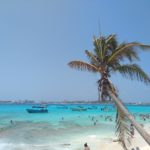
Amazing reviews as always!!! Greetings from USA
Thanks Ariel!